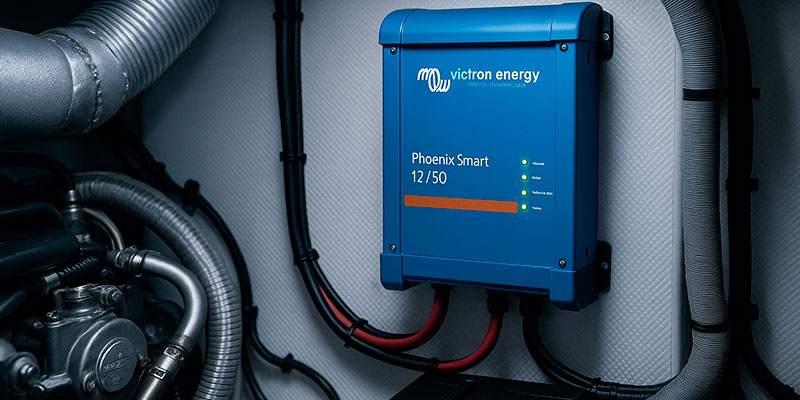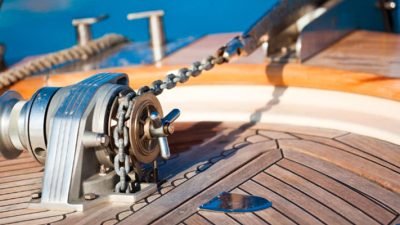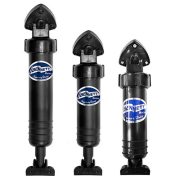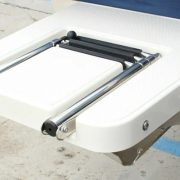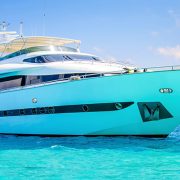When a yacht or boat is connected to shore power, one of the main advantages is the ability to recharge onboard boat batteries. However, this charging process depends on the vessel’s marine electrical system and whether it includes a suitable battery charger or inverter/charger.
How Shore Power Connects to Battery Charging
Shore power is an AC (alternating current) source—commonly 110V or 230V—provided at the dock. Since most marine batteries require DC (direct current), an AC-to-DC battery charger must be installed to convert and deliver the appropriate charging voltage.
- The shore power inlet connects to the dock via a marine-grade shore power cable.
- Power flows through a shore power breaker panel for safety and control.
- The connected battery charger or inverter/charger converts AC to DC.
- Charging current is delivered to different battery banks on the vessel (house, engine start, bow thruster, etc.).
What You Need to Charge Batteries via Shore Power
- Marine battery charger or inverter/charger – must be compatible with your battery type (AGM, lithium, flooded).
- Proper AC wiring – compliant with marine safety standards (e.g., ABYC, ISO).
- Battery management system (BMS) – essential for lithium batteries.
- Fuses and circuit breakers – for overload and fault protection.
- Smart charging features – help optimize battery life via multi-stage charging.
Types of Battery Chargers
There are different options depending on the vessel’s configuration:
- Standalone battery charger – dedicated unit for charging one or more battery banks.
- Inverter/charger combo – charges batteries and powers AC systems when off-grid.
- DC distribution panels – used to distribute charge effectively across systems.
Will All Boats Charge Batteries with Shore Power?
Not always. Simply plugging in shore power doesn’t guarantee battery charging unless your boat is properly equipped. Older boats or basic systems might only use shore power for appliances. In such cases, a portable marine battery charger or retrofit installation is required.
Common Issues to Watch
- Overcharging or undercharging due to incorrect charger settings
- Corrosion on shore power connectors reducing performance
- Voltage mismatch (e.g., connecting 230V shore power to 110V system)
- Battery degradation due to improper charging profiles
Key Advantages of Using Shore Power for Battery Charging
- Keeps batteries fully charged while docked
- Supports vital onboard systems like refrigeration and navigation
- Reduces wear on alternators and fuel usage from generators
- Prolongs battery lifespan when properly regulated
Conclusion
Yes, shore power charges boat batteries—but only if the right equipment is installed. A well-designed marine battery charging system with a high-quality inverter/charger or battery charger ensures efficient, safe, and reliable energy supply for all your onboard needs. For upgrades or troubleshooting, consult with a certified yacht equipment technician and ensure your system complies with marine electrical standards.
For sourcing premium boat spare parts or upgrading your marine electrical system, always choose components rated for maritime use to ensure long-term safety and performance.

